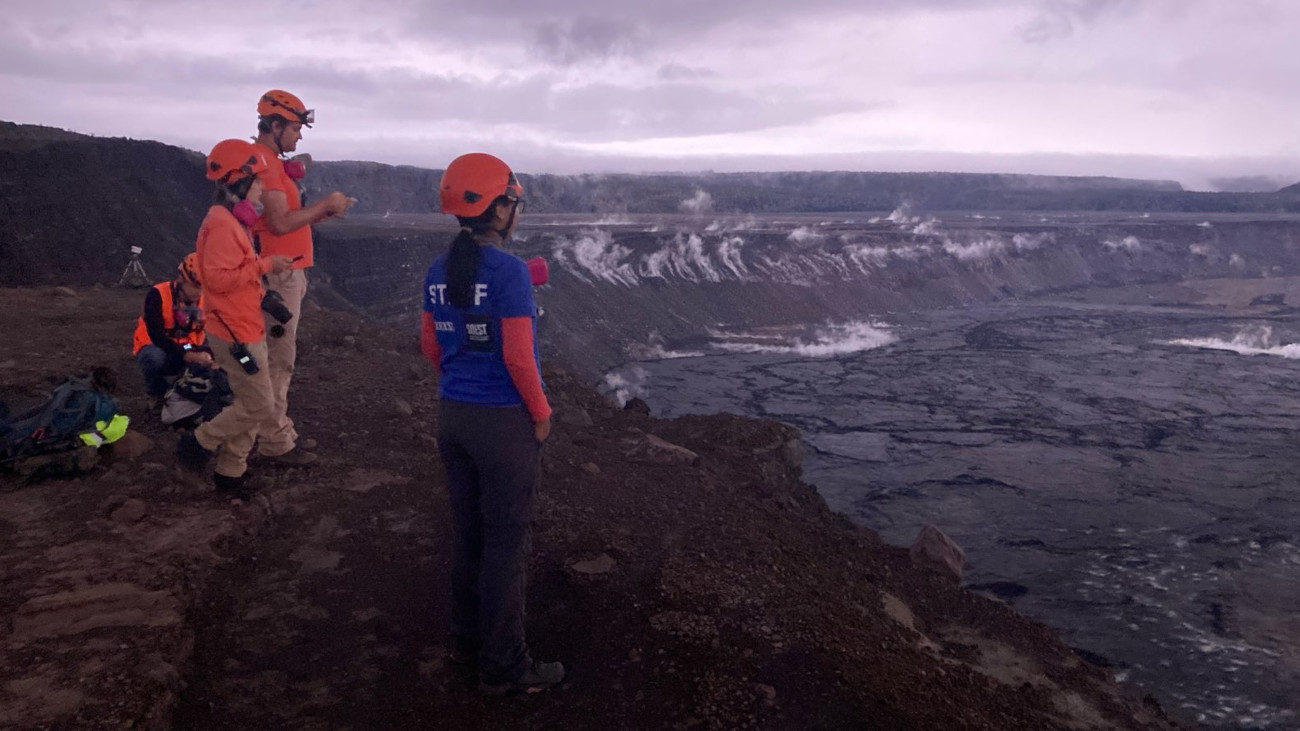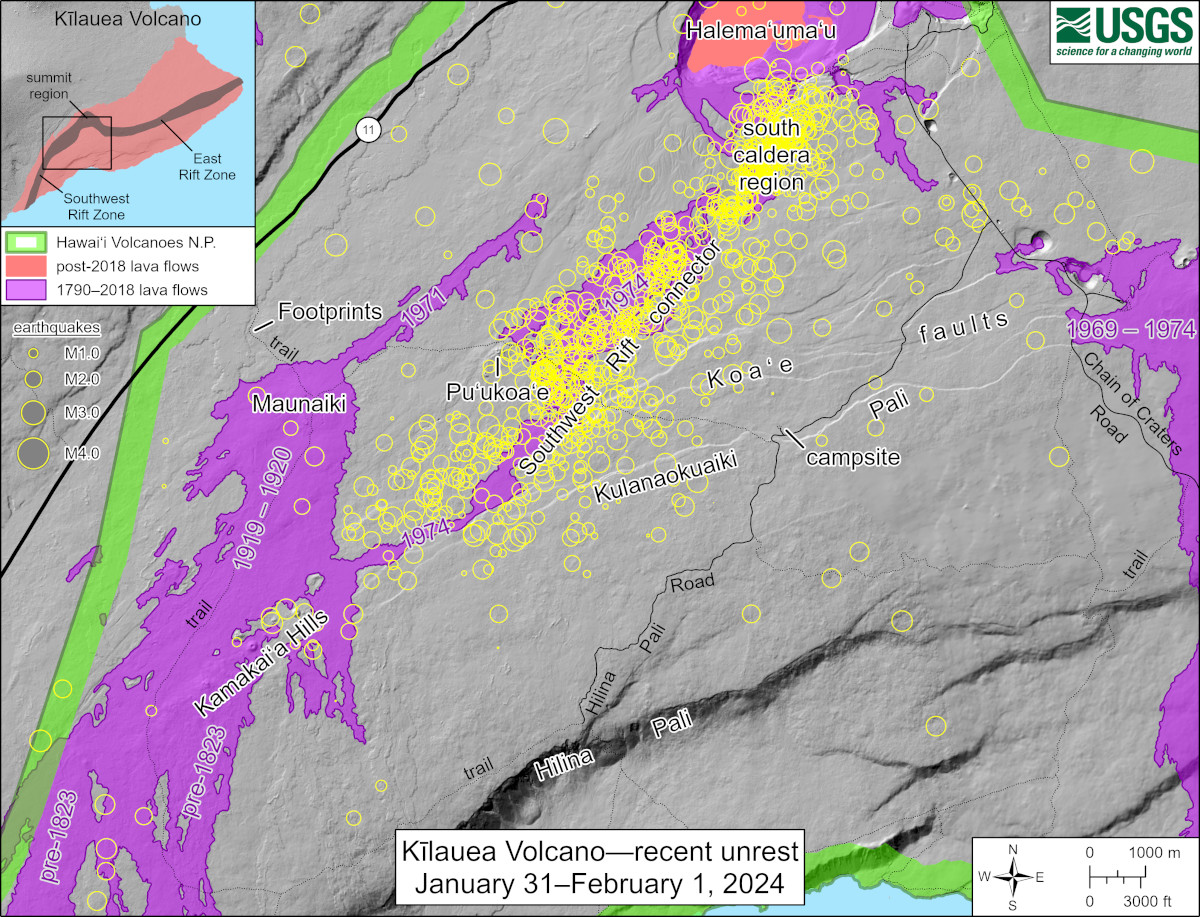
USGS: “On January 31, HVO geologists were stationed on the west rim of Kaluapele (Kīlauea caldera) to document the onset of any eruptive activity at the summit. Numerous earthquakes shook the rim and frequent rockfalls occurred on the walls of Halema‘uma‘u crater. but an eruption did not occur. Earthquake activity quieted down later in the day, but later migrated along the Koa‘e fault system, where it is ongoing.” (USGS photo by M. Patrick)
(BIVN) – As of 9 p.m. Hawaiʻi time, Kīlauea is not erupting. However, a high level of unrest is keeping the volcano alert level on WATCH, as scientists work to decipher what may be occurring beneath the surface.
As of Thursday night, an ongoing seismic swarm continued, with most earthquakes located beneath a fault zone 5 to 8 miles southwest of Kīlauea caldera. The USGS Hawaiian Volcano Observatory says there have been roughly 15 to 20 earthquakes per hour in this region for most of the day.
Tiltmeters suggest that the summit region is deflating, as magma moves from this region to the southwest.
This map (below) was published Thursday evening. The yellow circles mark earthquake locations from January 31st through noon on February 1st. Seismicity began in the summit region and shifted to the southwest later that day.
Earthquake depths have remained consistent, about 1 to 4 km below the surface, and have ranged in magnitudes of less than 1 to a maximum of 3.5.
Scientists say a significant amount of lava has been intruded south and southwest of Kīlauea caldera since the latest uptick in unrest began. Models suggest an accumulation in the region of as much as 40 million cubic yards (30 million cubic meters). The Observatory says that as long as the intrusion continues, there is a chance that an eruption could occur within or southwest of the caldera with little advanced warning. Such an eruption would be within Hawaiʻi Volcanoes National park and away from populated areas.
Meanwhile, the removal of buildings overlooking the summit caldera is underway.
The project has nothing to do with the latest volcanic unrest. Rather, it is related to the eruption and summit collapse of 2018, which heavily damaged the buildings and infrastructure at the location.
These are the last videos recorded within the now-abandoned Jaggar Museum, and the the former US Geological Survey Hawaiian Volcano Observatory buildings. The National Park Service announced the project to remove the buildings is getting started. The contract for Phase One of the Disaster Recovery Project is 600 days.
The park plans to restore the overlook area to a more natural landscape, considered by Native Hawaiians and other groups as a sacred area. The National Park says the buildings will be removed but the observation deck will remain.
Scientists are able to continue their continuous monitoring of Kilauea from alternate locations. They say the current situation to the southwest as the situation remains dynamic, and they will continue to issue daily updates, and additional notices as activity warrants.


by Big Island Video News11:17 pm
on at
STORY SUMMARY
HAWAIʻI VOLCANOES NATIONAL PARK - Magma shifts from the summit to the southwest, as summit buildings are set to be removed.